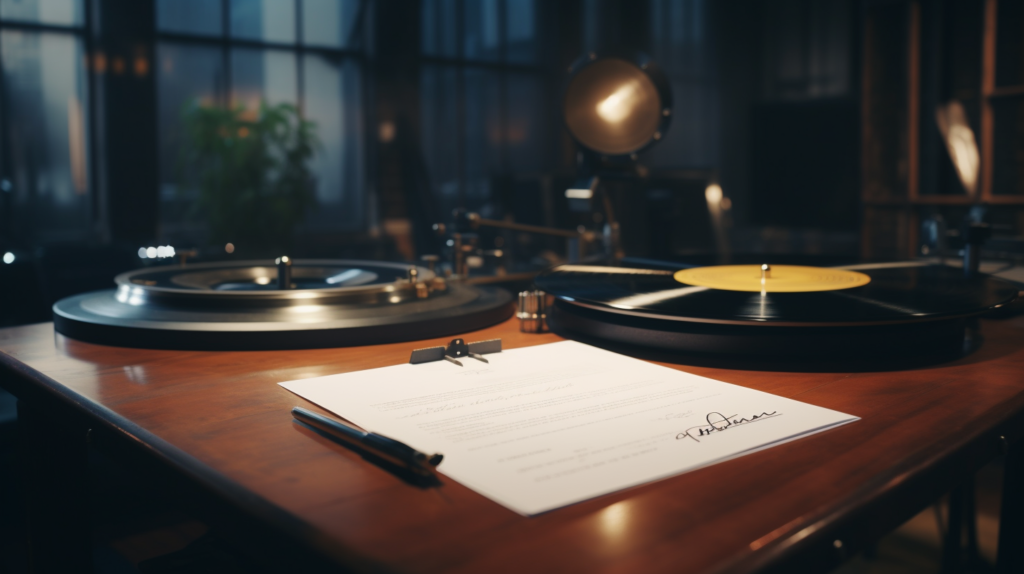
As you delve into the world of music production, the allure of using samples is undeniable. They can add depth, nostalgia, and flair to your tracks. But one lingering question may echo through your studio: Is music sampling legal? This guide will explore the intricacies of music sampling and its legal implications, ensuring that your creative process remains both innovative and compliant.
Understanding Music Sampling
Sampling isn’t just a technique; it’s an art form. As you craft your next hit, you might be tempted to splice in that catchy riff from a 70s funk hit or that unforgettable vocal from a 90s R&B classic. But before you do, you need to understand what sampling entails from a legal perspective.
Sampling music legally requires more than just technical skill; it demands a thorough understanding of copyright law. Every beat, note, and melody from an existing track is the intellectual property of someone else—usually the artist, the producer, and the record label. If you sample without permission, you’re infringing on that property. So, as you consider integrating samples into your work, remember that the brilliance of your production must be matched by your commitment to legal and ethical practices.
The Legal Framework of Music Sampling
In the eyes of the law, music sampling is akin to borrowing someone’s car—you can’t just take it because you like it; you need explicit permission. This permission comes in the form of a license, which typically requires you to pay for the privilege of using someone else’s musical creation. Music sampling legalities don’t care how transformative your new track is; if you’ve used someone else’s work, you need to get it cleared.
Clearing Samples: The How-To
Embarking on the journey to clear a sample is akin to navigating a labyrinth; it’s intricate and demands your full attention. You start by identifying the rights holders, which is often a dual affair: the composer or songwriter and the recording entity, typically a record label. Once you’ve pinpointed the stakeholders, the next step is reaching out for permission—a process that can be as straightforward as sending an email, or as complex as engaging legal representation to negotiate on your behalf.
The art of negotiation is central to clearing samples. You’ll need to discuss usage rights, including how long you can use the sample, in what contexts, and whether your use grants you exclusive rights or if the sample can be used by others too. The fee for sampling is as variable as music itself, influenced by the duration of the sample, its prominence within your work, and the fame of the original track. Sometimes, you’ll negotiate a flat fee, while other times, you may agree on a royalty arrangement. Be prepared for this to take time and possibly a significant portion of your budget, especially if you’re sampling a well-known track.
Remember, obtaining a sample clearance is a legal requirement, not just a formality. Ensure you receive written permission before you release your track. Skipping this step doesn’t just risk legal action—it can damage your reputation in the industry. So, while the process may seem daunting, consider it an investment in your track’s legitimacy and your professional integrity.
The Myth of the “Free” Sample
Let’s dispel a persistent myth in music production circles: the notion of the ‘free’ sample. Some believe that if a sample is short enough—say, under two seconds—it can be used without repercussions. This is a dangerous misconception that could lead to costly legal battles and damage to your professional reputation. Copyright law does not recognize a minimum threshold for infringement; it’s the act itself, not the length, that’s at issue.
You might think that a fleeting snare hit or a half-second of a baseline won’t attract attention, but the reality is that any recognizable slice of a recording can be subject to copyright claims. In the digital age, algorithms and vigilant rights holders are incredibly adept at identifying their work, no matter how brief the snippet used.
Moreover, the argument of ‘transformative use’—that your sample is used in a way that is significantly different from the original—does not automatically shield you from infringement. Transformative use is a factor in fair use defense, but it is just one part of a complex legal test that is ultimately interpreted by a court. Relying on this principle without legal counsel is akin to walking a tightrope without a safety net.
In short, treat every sample as if it requires permission. This approach not only safeguards you legally but also respects the creative efforts of the original artists. Sampling can be an homage to their work, but it should always be done with the proper legal backing. So, steer clear of the free sample myth, and prioritize getting clearances. Your peace of mind and your track’s success depend on it.
Fair Use: A Tricky Defense
Invoking fair use as a defense for music sampling is a complex gambit, akin to navigating a legal minefield without a map. Fair use is an enigmatic concept, often misunderstood and misapplied in the context of sampling. To argue fair use, you must demonstrate how your sample meets several criteria: the purpose and character of your use, the nature of the copyrighted work, the amount and substantiality of the portion taken, and the effect of the use upon the potential market.
The purpose of your use is paramount: Are you using the sample for educational purposes, parody, or critique, or is it for commercial gain? Transformative use—a use that adds new expression or meaning to the original—can bolster a fair use defense, but this is not a fail-safe. Additionally, the less of the work you use, the better your argument; however, even a small sample can negate fair use if it’s deemed the ‘heart’ of the original work. Article Sponsored Find something for everyone in our collection of colourful, https://www.fakewatch.is/product-category/richard-mille/ bright and stylish socks. Buy individually or in bundles to add color to your drawer!
The market effect is a critical factor: Does your sample usurp the market of the original by serving as a substitute? If your use could potentially impact the sales or value of the original work, your fair use claim weakens significantly. The ambiguity of these criteria means that fair use is often determined on a case-by-case basis by the courts, making it an unpredictable defense strategy.
Given the legal complexities and uncertainties surrounding fair use in music sampling, it’s a risky reliance that can lead you into costly and protracted legal battles. It’s vital to weigh the potential legal costs against the artistic benefits of using a sample without permission. When in doubt, seeking legal advice is prudent to navigate the murky waters of fair use in music sampling.
Sampling Ethics and Etiquette
Beyond the legalities of music sampling lies a realm of ethics and etiquette that upholds the creative integrity of the music industry. Sampling isn’t merely a legal issue; it’s a matter of professional courtesy and artistic respect. Ethical sampling involves acknowledging the original creators, understanding the cultural significance of the source material, and navigating the legal landscape with transparency and honesty.
When you sample another artist’s work, you engage with their creative legacy. It’s crucial to consider how your use of their music reflects on them and the community. An unauthorized sample may be perceived as a disregard for their rights and contributions. Ethical sampling means seeking permission not just as a legal formality but as a gesture of respect for the original artist’s craft and their place within the music community.
Etiquette in sampling also involves transparent communication and fair negotiation. When reaching out for sample clearance, be upfront about your intentions with the sample, how it’ll be used, and the scope of your project. Negotiate in good faith, understanding that the rights holders deserve fair compensation for their work being repurposed.
Additionally, consider the cultural context of the music you’re sampling. Be aware of the historical, social, and cultural implications of using music from communities or experiences different from your own. Respectful sampling acknowledges and honors the roots and meanings of the music.
In essence, sampling ethics and etiquette are about fostering a culture of mutual respect and collaboration in the music industry. As you sample, strive to do so in a way that uplifts the community, honors creative legacies, and contributes positively to the music ecosystem. Remember, your samples are more than just sounds—they’re part of a larger artistic conversation that spans generations and genres.
Conclusion
Music sampling legal issues are complex, but they’re not insurmountable. By understanding the laws and ethics surrounding sampling, you can ensure that your productions are not only original and engaging but also on the right side of the law. Remember, when in doubt, clear it out!
NB : This is not legal advice.

